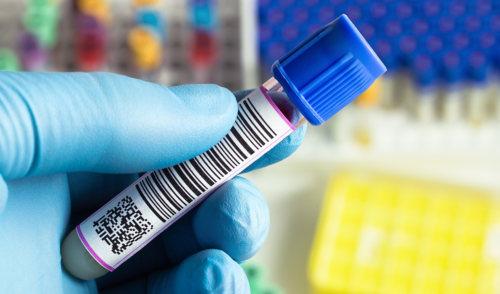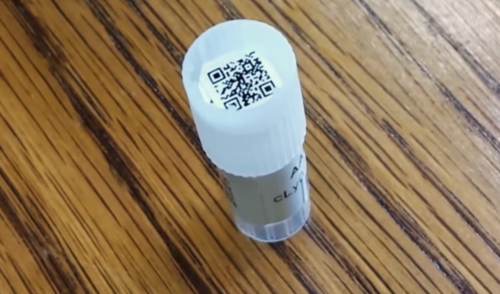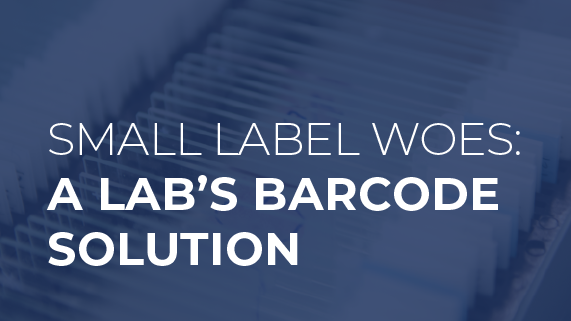Small Label Woes: A Lab's Barcode Solution
Small Label Woes: A Lab's Barcode Solution
Not all barcodes are created equal.
There are two main types: 1D and 2D.

This vial label has both a 1D barcode (right) and 2D barcode (left).
You see 1D barcodes everywhere. This isn’t surprising, because they work for most labeling solutions.
But what happens when a standard, 1D barcode won’t work? This was the case for the laboratory that reached out to us looking for a solution.
They were looking to encode several lines of data onto their vial labels. These which would be scanned throughout the protocol process to keep reporting concise and accurate. With the amount of data they needed to encode, a 1D barcode would be too large to fit on the vial label. So, we created a compact 2D barcode with the required data and printed a test.
The 2D barcode scanned perfectly at first, but once it was applied to the vial, the scanner couldn’t read it. Since the vial was curved, it interfered with the barcode’s readability. The label would need to be flat in order to scan correctly.
The vial did have one flat surface - the top - which was just shy of half an inch in diameter.
Another label was printed, this time small enough to fit on the top of the vial. Once it was applied, the data in the barcode was easily picked up by the scanner. The lab had its solution!

The 2D barcode was scannable, even on a label less than half an inch wide.
2D barcodes are excellent for applications requiring lots of data in a small footprint. In this lab, they were applied to vial tops, but they can also be used to label tissue cassettes, microscope slides or even armbands. Wherever label space is limited, 2D barcodes excel.
Finally, keep these points in mind if you're considering a 2D barcode solution:
- Scans best on flat surfaces
- Requires a 2D barcode scanner (also known as an imaging scanner)
- Prints best at 300 dpi or greater
Ready to dive in? Brainstorm with one of our barcode buffs.
